How to plant arugula seeds?
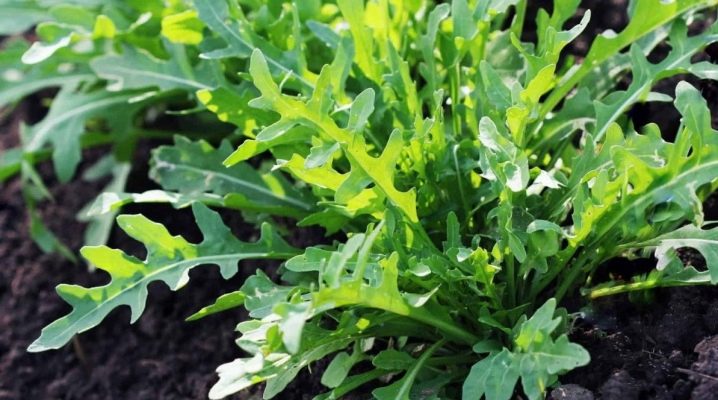
Recently, arugula has been increasingly appearing in the beds. The plant is gradually gaining popularity, and all thanks to its unique properties and quick survival in almost any soil. Growing arugula is easy with simple tips.
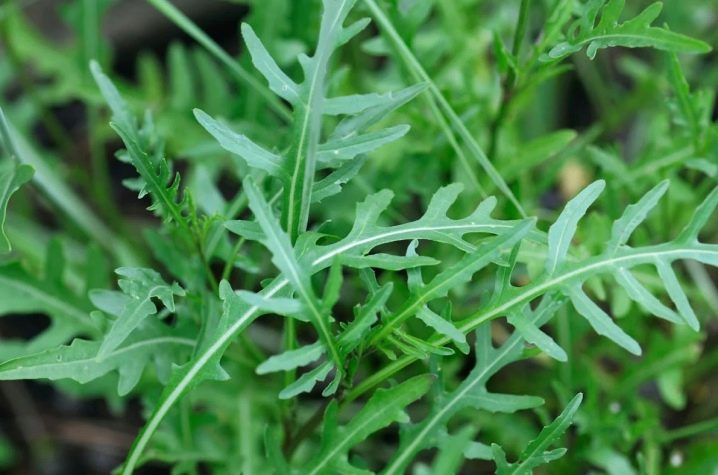
How to collect arugula seeds?
Today arugula has over 30 varieties that are suitable for growing both in the open field and in greenhouses and at home. The plant looks like regular grass. Before starting planting work, you need to buy or collect plant seeds, as well as carry out their preliminary preparation.

Seeds can be obtained by placing the perennial arugula in hot, dry weather. This is the optimum climate for the maturation of the seed. Additionally, gardeners recommend reducing the number of waterings. The seeds are found in fruits in the form of long pods, the structure of which is similar to the shoulder blades of peas or beans. On average, one pod contains up to 30 grains, which resemble radish seeds.
It is recommended that the seed be collected before the pods dry and begin to open. This will prevent the loss of seeds, which in this case would begin to crumble to the ground. The best way to collect is to trim the peduncles along with the pods when the latter acquire a yellowish-brown hue. Then it will remain to dry the stems on their own by hanging them in the open air and spreading the canvas under them.
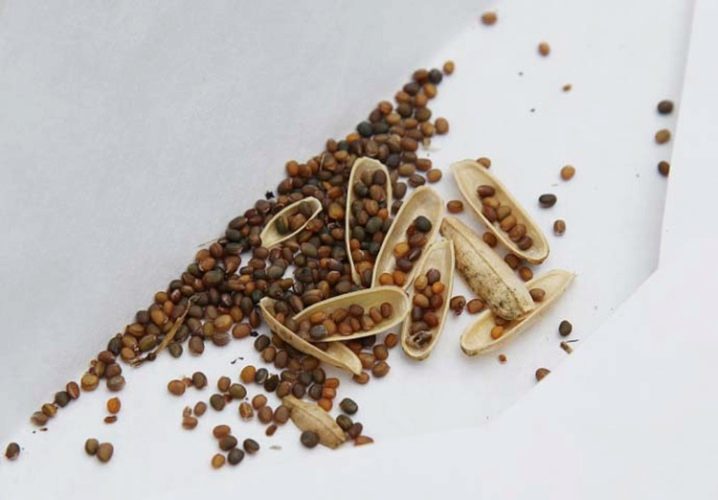
Sowing time
Planting seeds in open ground is carried out mainly in April or August. This is explained by the fact that the plant loves warmth. And if in the summer there are no problems with the survival rate of arugula, then in the spring it is worth waiting for the air temperature to rise to 10 degrees Celsius. If all the conditions are met, the sprouts after planting the seeds will appear after 3-5 days.
In August, on the contrary, planting work is carried out after the heat subsides. In the southern regions, these are the last days of the month, and in the western regions, on the contrary, it is the first decade or the middle.
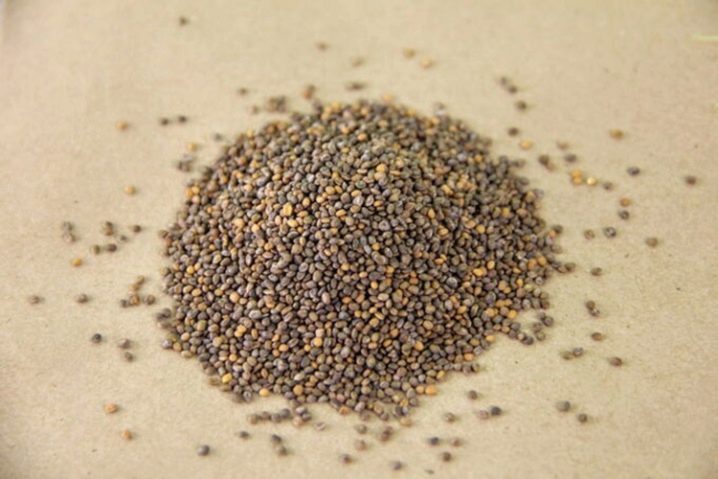
Garden and seed preparation
First of all, you need to decide on a place for planting arugula. The plant prefers shaded or lightly lit areas where there are no drafts. The culture has no special requirements for the soil, but it is better to give preference to soils with neutral acidity.
And also gardeners recommend not planting arugula in lowlands, where groundwater is high. Otherwise, it is necessary to provide for drainage, otherwise waterlogging will lead to decay of the root system.
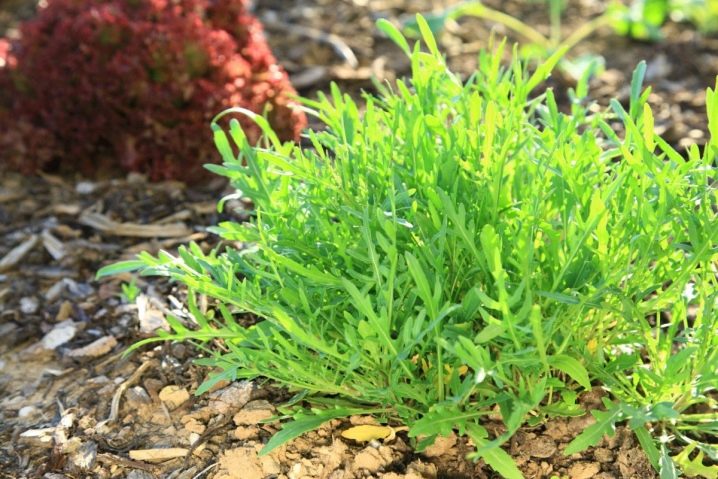
When the place for planting the arugula is selected, you can start preparing the seeds. To get friendly shoots, the seed must go through the stage of dressing and strengthening the immune system. This will require:
-
take hydrogen peroxide with a concentration of 3%;
-
heat the solution to 40 degrees;
-
soak the seeds;
-
keep them in solution for 7-10 minutes;
-
drain the solution;
-
dry the seeds on gauze or a napkin.
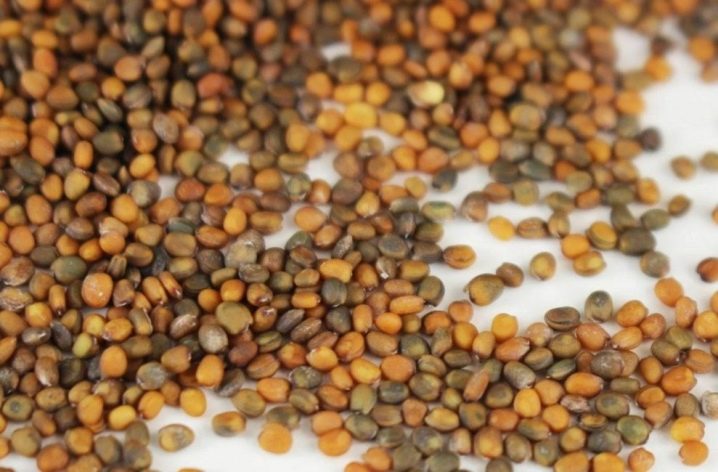
Additionally, it is recommended to soak the seeds in a growth promoter for 2 hours. Then it remains to place them on a damp cloth, wrap and transfer them to a warm, sunny place for germination, so that later you can easily plant greens.
The third point that cannot be ignored is the preparation of the soil. The soil in which the rucola will grow must be prepared in the fall.To do this, you will need to thoroughly loosen the area and remove all weeds to prevent overgrowing of the area in the spring. Additionally, the land should be fertilized with organic compounds. Usually, 3 kg of compost, 20 g of potassium and 20 g of superphosphate are used - this is the optimal amount of fertilizer per square meter.
In early spring, it is necessary to add some more fertilizer to the soil, to re-dig the ground.
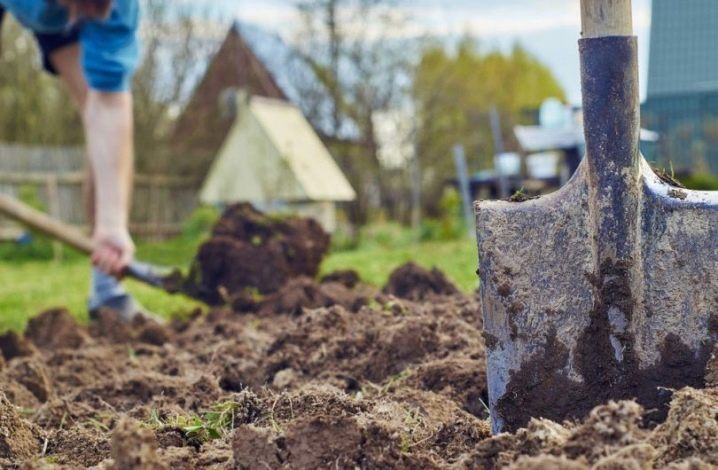
Sowing
Planting arugula seeds can be called standard. It is, as in the case of other greens, carried out in a few simple steps.
-
First, in the prepared area, it is necessary to make holes up to 1.5 cm deep and water each abundantly. In this case, between the rows it is worth keeping up to 30 cm, and between the holes - 5 cm.
-
Next, you need to place seeds in each hole.
-
The third stage is to cover the beds with fertile soil and a small rammer.
If the seeds are planted in the spring, there is a high probability of recurrent frosts. To prevent the seed from dying, it is recommended to cover it with foil overnight.
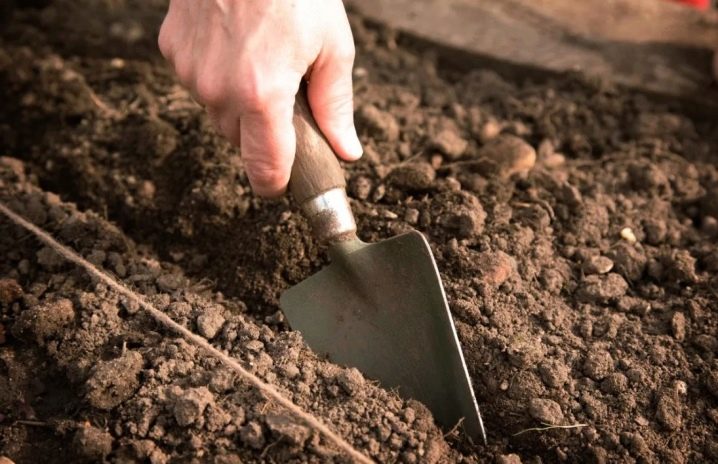
Seedling care
Rucola is undemanding to care, for which it is appreciated by gardeners and is in demand in many regions. However, in order to obtain a bountiful harvest, it is recommended to take into account several agrotechnical recommendations that will help prevent diseases and insect attack.
- Temperature. The optimum temperature for crop growth is 18-20 degrees Celsius. The lower the thermometer goes down, the slower the rucola begins to grow, practically stopping its development. Therefore, with the onset of cold weather, the growing season is delayed. Too high a temperature, on the contrary, leads to premature flowering of the bush, which is also not very good, since the fruits and leaves lose their taste.

- Watering. Arugula loves moisture, so you need to water the plant regularly, adding a large amount of water. It is important to ensure that the soil remains moist at all times without stagnating moisture. On average, watering is carried out 3-4 times a week in the northern regions and every day in the southern regions.
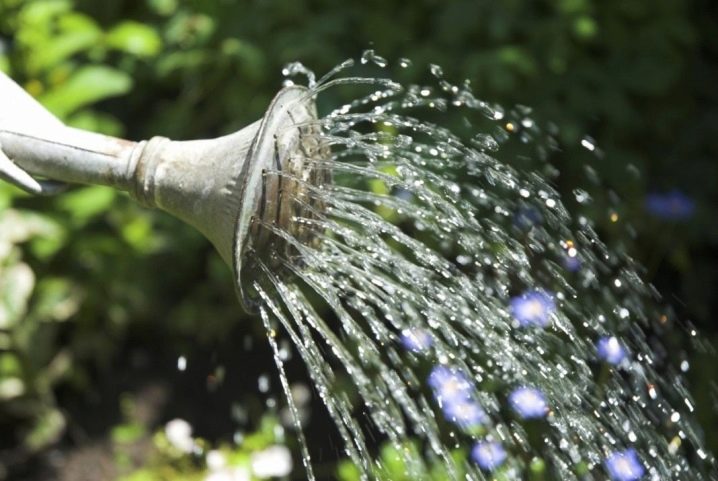
- Weeding and loosening. To provide arugula with the necessary amount of oxygen, it is recommended to regularly loosen the soil in the area around the bushes. Usually, the procedure is carried out after each watering with a hoe or a special garden trowel. And you should also weed the area to prevent the spread of diseases and pests. At the same time, it is important to remove weeds by the root in order to prevent the grass from growing again.
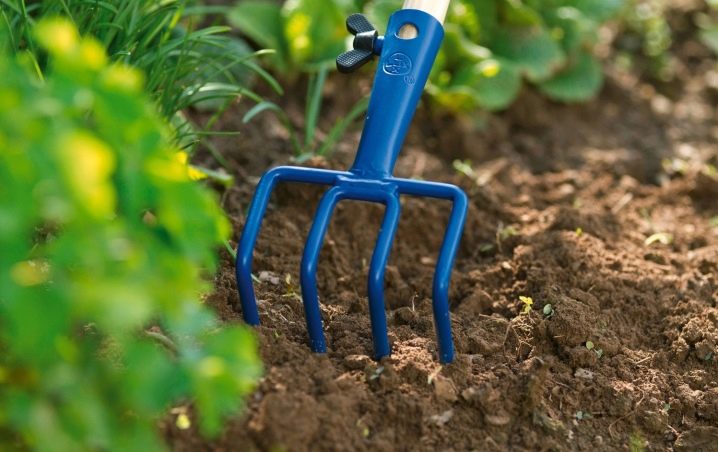
- Top dressing. Experts have different views on the need for arugula fertilization. On average, the plant is fertilized 1-2 times per season, using mainly organic complexes. It is not recommended to use mineral compositions, since the culture already absorbs nitrates well, which, due to the short growing season, do not have time to decompose. If the site was fertilized before the arugula was planted, then additional fertilizing is not necessary.
Compliance with agrotechnical recommendations will allow you to achieve a high yield of arugula.
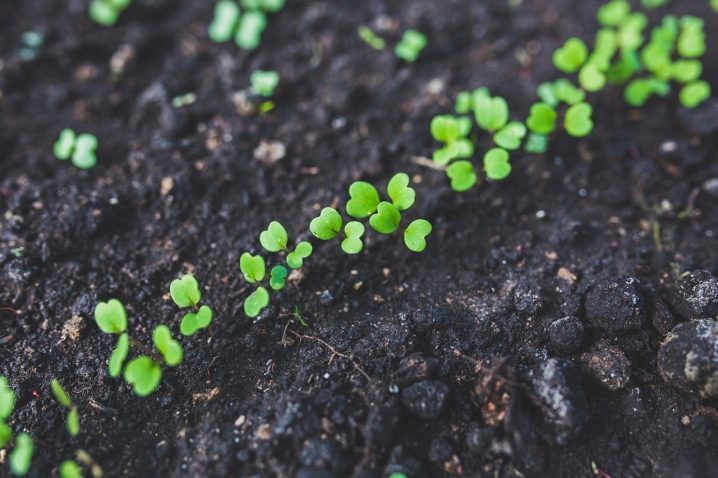
Growing arugula on a windowsill
Arugula is an unpretentious plant that will grow under the supervision of even an inexperienced gardener. You can plant the culture both in open ground and in a special container on the windowsill, where the grass will have time to grow from April to August.
Among the common varieties of plants on the balcony are grown:
-
"Curiosity";
-
"Nut mousse";
-
"Poker";
-
Olivetta;
-
"Arrows of Cupid".

If desired, you can grow arugula at home throughout the year for a bountiful harvest. This is especially true for people who do not have their own garden or suburban area. Growing greens at home in winter takes a few steps.
-
Buy individual peat cups or small pots.
-
Provide 1-2 holes in the bottom of each pot for organizing drainage.
-
Fill the container with fertile soil and lightly compact the soil.
-
Make a small indentation in the center.
-
Put 2-3 arugula seeds.
-
Sprinkle the sowing with earth.
-
Water abundantly.
Then you need to cover the pot with plastic for a couple of weeks and put it in a warm, sunny place. Seedlings with proper planting will appear quite quickly.
When the greens are old, you can cut them off and plant the seeds again.
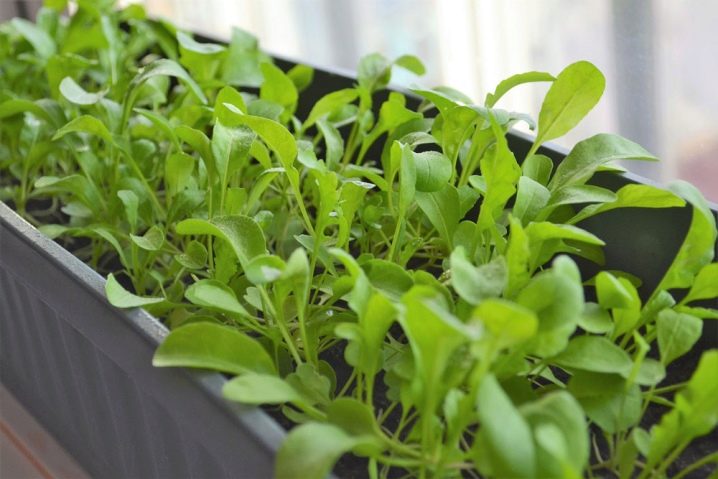
Experienced gardeners know a few tricks that will help you achieve a tasty and juicy harvest.
-
Do not wait until the rucola begins to form a peduncle. The leaves of such a plant acquire a bitter taste. Therefore, it is best to cut the greens before they bloom. This is usually done when the length of the sheet plates is 10 cm.
-
When receiving dense bushes, it is necessary to cut off only part of the leaves on them, leaving young plates. It is important that there are always small leaves of greenery on the trunk.
-
Only fresh arugula leaves can be eaten. If the cut leaves remain, they must be wrapped in plastic wrap and placed in the refrigerator. And also the leaves can be transferred to a jar of water.
-
It is not necessary to plant a large number of arugula seeds at once when growing at home. It is better to first cut off young leaves from already ripe greenery and only then sow the seeds again. Then there will always be fresh grass on the table.
Arugula is an attractive and easy to cultivate and maintain plant that is suitable for growing both in the garden and in a greenhouse or at home.
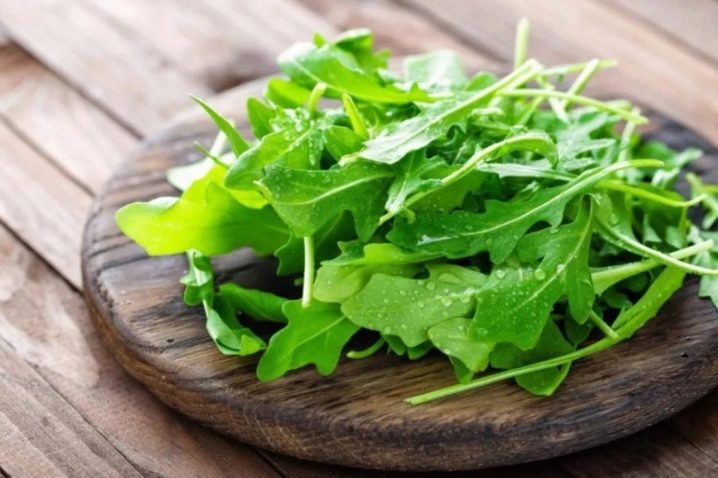








The comment was sent successfully.